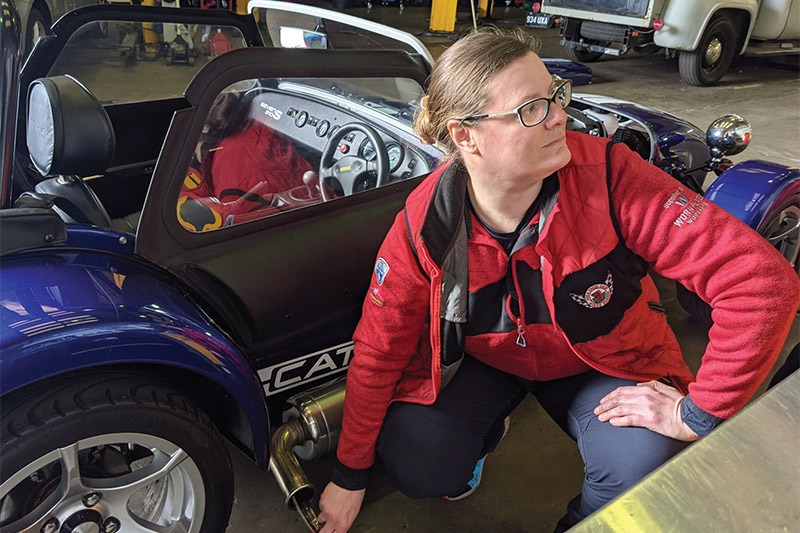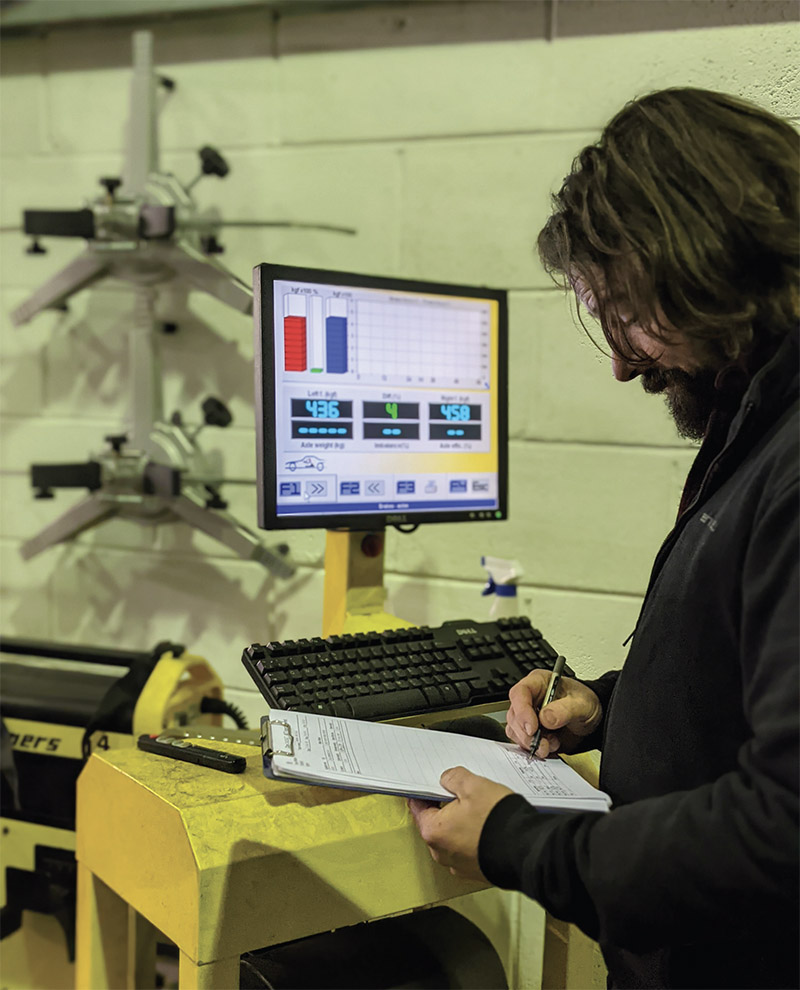
Avia Autos’ Hayley Pells is conquering the paperwork mountain that accompanies the MOT period with the help of digital solutions.
Reducing the amount of physical paperwork that any organisation generates has been a goal for many, but it isn’t as new an idea as you might think. Micronet, an automated office equipment company, has been credited with coining the phrase in 1978. 44 years later and many small businesses seem to have more paper than less. MOT paperwork has increasingly become digitalised, moving the manuals and guides online as live documents are a much faster and accurate method to update testers, with very few lamenting the lost opportunity to update the teeny tiny ring binders with fiddly scraps of paper.
Test certificates too are going digital and the MOT Test History (MOTH) service is becoming increasingly popular. This allows motorists to check the history of any vehicle and can print their own certificate, but will require the 11-digit V5C (log book) reference number. The digital method ran in tandem with the obligation to produce a paper copy for many years, the pandemic providing the opportunity to reduce paper copies further with temporary measures.
The requirement to issue a paper VT20 (pass certificate) has now been optional since Special Notice 04:21. There is no prohibition in printing pass certificates if the Vehicle Testing Station wishes to do so, but there is only a requirement now if a customer makes a specific request to have one.
Those using digital solutions for garage management systems and/or customer invoicing can choose to attach PDF documents to evidence the completion of work. At Avia, the inclusion of digital certificates has been very popular, accelerating the process of authorising further work. The invoice, service documentation, the MOT certificate, and any estimates for recommended work are emailed to the client, who generally returns by email their further instructions. This more transparent method has increased work, feedback from our motorists has been that they do not feel pressured into an “on the spot” decision and can take the opportunity to check the detail of the estimate. This extra time is appreciated at our end too as instead of a call back, which can be tricky for a small business like ours that does not have front of house staff. An email system has proved to be less disruptive and provided a comforting trail of evidenced authorisation.

Popular social media pages populated by MOT testers and trainers have questioned the status of advisory notices or minors, and to whether a paper copy is required in these circumstances. Referring to the guidance as these are printed on a VT20, with no separate document required for advisory or minor notices, then no printout is required unless specifically requested. However, there is nothing to prevent the issuing VTS from providing a paper copy if they feel more comfortable doing so. If you plan to reduce the amount of paperwork you produce, more work might be required before instigating the change. Here are some handy steps for those making the change.
1. Create a plan.
Are you going to issue a digital certificate, signpost to the MOTH, or both?
2. Discuss the plan with your team and ask for feedback.
Check at this point if you need to revisit step one.
3. Communicate to your vehicle presenters.
Posters in the waiting room, social media posts, website posts, email newsletters – combination of all regular communication methods can proactively inform of change and provide a marketing opportunity for greener business practices. Or you can communicate on each presentation.
4. Reference the government resource and reassure paper copies are available if desired.
Although the VTS is not to use the MOT as a strategy to develop further business, digital communication can increase uptake of advisory and minor notices on the MOT certificate. As minor faults should be rectified as soon as possible, this is of benefit to road safety.
Things to include in your digital communication:
- Invoice of completed requested work
- Service/repair documentation
- MOT certificates, retest procedure for cars removed from the VTS for repair (if appropriate)
- Photographs of defects found
- Estimate for further work (include any information about deposits for nonreturnable items if applicable)
- Timescale for completion, using a timeframe such as “two working days from authorisation”, or “by 17:30 if we can receive authorisation by 13:00” can help meet expectation
- Alternative booking date
- Terms & conditions
If you are a Limited company and/or VAT registered, don’t forget the appropriate details. Lots of people forget to include a registered address in digital communications and this can easily be included in an email signature.
FAQs
Do emissions certificates need to be paper based?
Emissions certificates need to be “readily retrievable”; they can be digital or paper. See section H5 of the MOT Testing Guide
Do I still have to have the “diesel testing shouldn’t leave you fuming” poster?
Customer information and leaflets are available in electronic formats, there is no requirement for the VTS to distribute them. See section H3.
Do I still need to display any posters?
Yes, as per the guide, the MOT noticeboard must be displayed where they can be easily read by anyone submitting vehicles for test. The temporary cessation of this requirement during the pandemic was retracted in Special Notice 04.21.
VT30s (fail certificates) must be printed and issued to the vehicle presenter, and it is important to note that this includes those generated under the Pass under Rectification Scheme (PRS).
Don’t forget, even if all processes are digital, and the presenter is happy with a digital VT30 to authorise repairs, you must still issue a paper VT30 to remain compliant.









